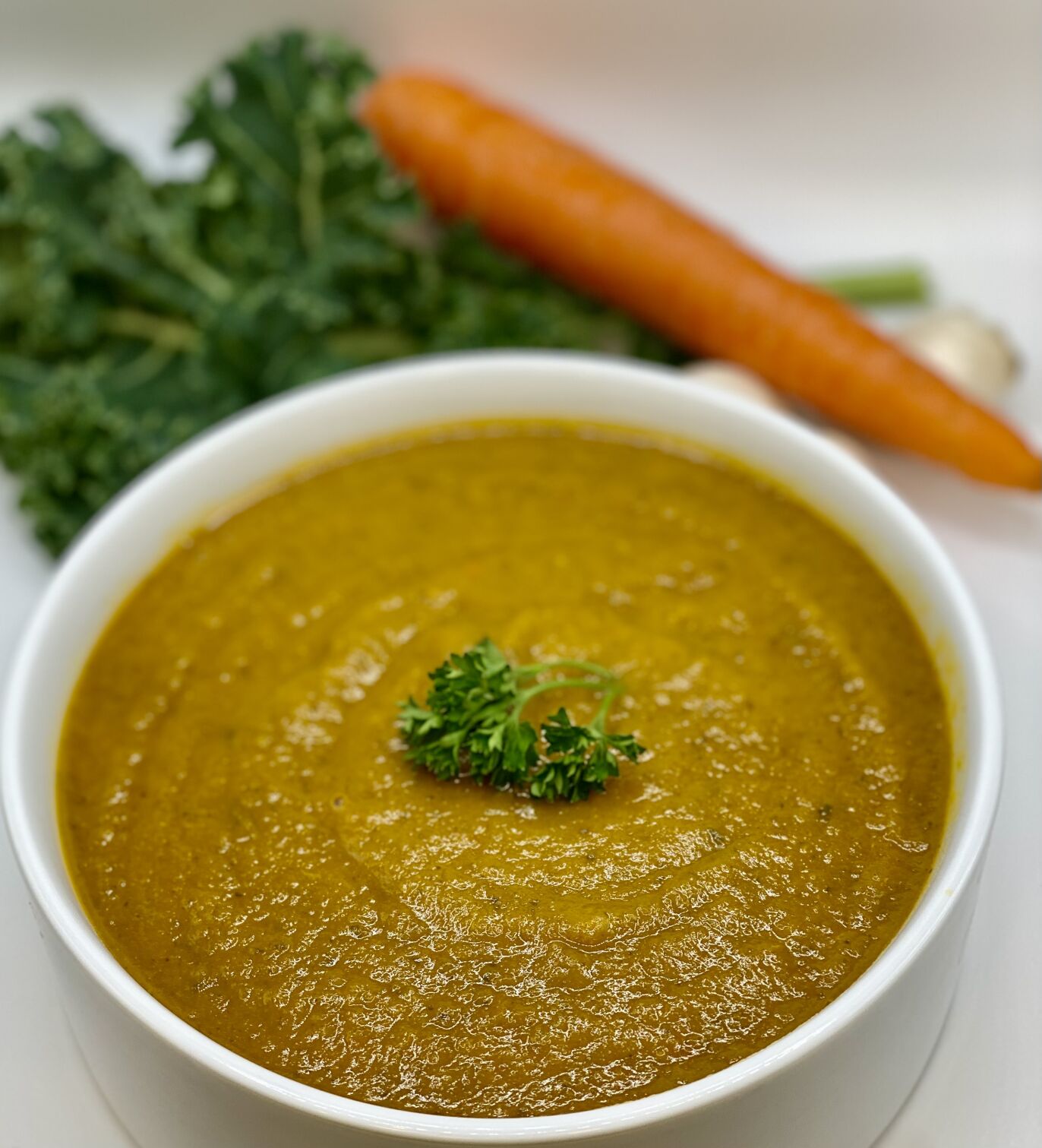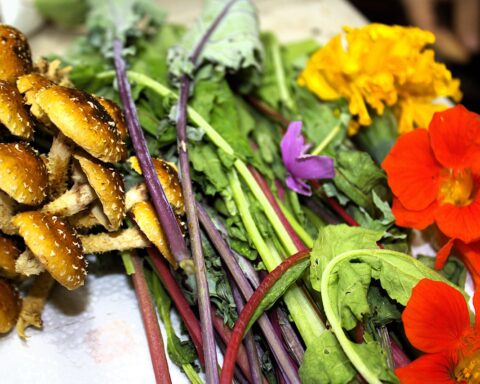By Katharine A. Jameson, Vermont Country correspondent.
People often say that image is everything. Perhaps this is what perpetuates the seemingly endless drive to reinvent ourselves. We change our hairstyle, buy new clothes, join a gym and make proclamations to lose weight.
Amongst our many attempts at fad diets (not to mention the multibillions of dollars spent on the weight loss industry), are our endeavors to detoxify our bodies. Cleanses are all the rage — detoxing from the inside out. We drink juice, starve ourselves, restrict, all in the name of our liver and kidneys.
Just how effective are these cleanses? Do they work, or are we throwing more and more money down the diet-industry drain?
To juice or not to juice
Medications aren’t the only weight loss “solutions” with side effects. Juice cleanses have been all the rage for decades, not the oldest of which is the Master Cleanse, or the lemonade diet, which has been around since 1941.
Juice bars abound across the nation. Some of their programs claim to do everything from helping us lose weight and boost our energy, to the extreme of being medicinal and sponsoring major health benefits. It’s not that tough for juice cleanses to deliver on their weight loss promise. As with all fad diets, once we give up our beloved processed foods, sugar, alcohol, grains, dairy and anything else that may bring us pleasure (or nourishment), we will lose weight! Until we meet again, that is …
Although by 2026, the global market for detox products is projected to surpass $75 billion, all those cleanses, juice, herbs, teas and pills may not be all they’re cracked up to be. While short-term cleanses show little detriment to the gut or our overall health, we may not be getting the benefits we hope to. Those of us looking to detox from chemicals are likely to be disappointed. Overall, we can’t pinpoint specific chemicals we may have ingested with certain foods or juice combinations. The only method is to avoid the chemicals we can, eat well, sleep well, drink enough water and rely on our God-given detox system.
Our bodies have natural detox systems — we excrete toxins through our sweat, breath and bathroom excretions. Our skin, lungs, liver, digestive tract and kidneys all act as a filtration system as well. While many experts concur that there most likely aren’t any long-term negative effects sponsored by doing a juice cleanse for a few days, others worry they lead to disordered eating. Using cleanses as a quick fix can mean that we eat less consciously when we’re not on our detox.
Natural detoxing can be done by focusing on whole foods, steering clear of sugar and booze, getting enough sleep, exercising and drinking enough water. Looking for a quick fix? Think again. Many of us attribute the way we feel when we’re focusing on a detox to just that: the detoxification process; but these symptoms are often simply manifestations of having given up the things we depend on in our diet like caffeine, sugar and alcohol. It’s not rocket science that a juice diet may sponsor more frequent trips to the bathroom, something we might attribute to our cleanse. Dizziness can be a simple effect of low blood sugar, which is easy to experience if we’re not eating enough during our cleanse.
From one extreme to another
When we juice fruit or even vegetables, the pulp, or “garbage” that the juicer spits out, is the fiber from our produce. Fiber is the stuff that makes the sugar in fruits and veggies break down less quickly. It’s one of the reasons we’re told to eat vegetables. This is stuff we should be ingesting with the fruit or veggie, not treating it as garbage. Without fiber, sugar levels in the juice are higher, making juice consumption on the regular a questionable idea.
Rarely, if ever, might you sit down to all of the whole fruits or vegetables that are used to make a single serving of juice. Whether it’s in smoothie form or juiced, these drinks host a much larger serving of fruits and vegetables than we would be able to eat in their whole form.
Aside from lacking fiber and protein, juice contains little vitamin B12 and could lead to loss of bone and muscle mass over time. Muscle loss can slow our metabolism, which can lead to weight gain once we’ve started eating regularly again. So this year, skip the juice cleanse and enjoy whole fruits and veggies as a part of your meals and snacks. Focus on fewer ultra-processed foods, more sleep, water and exercise to really get the detox going.
Detox naturally
It’s our body’s job to get the bad stuff out. We need not provide catalysts such as diuretics, laxatives or teas for our bodies to embark on this duty. Certain foods aid natural detoxification. We might be better off spending our “juice cleanse” money on simple foods that can help detoxifying organs like the liver, kidneys, lung, GI tract and skin do their job.
Water and fiber are two key players in any detox or fad diet, but for good reason. Water helps keep our system moving things through, which is pivotal in eliminating everyday toxins and other harmful substances. Fiber is a key player in the elimination process as well. Not only does it feed the good bugs in our gut, but it can help less healthy food move through our system more quickly. Fiber has been likened to using a scrub brush on your intestines. Sounds painful, but it can actually be therapeutic and may reduce risk of colon cancer in the long run.
Fermented foods
Our gut refers to our GI tract and everything from our mouth down south. Fermented foods rich in probiotics like kombucha, sauerkraut, kefir, yogurt and miso feed our good gut bugs, helping us to keep our gut balanced. Prebiotic filled foods aid our gut health as well. They provide essential nourishment for our good “gut bugs” and aid in natural detoxification.
Some of the more bitter or pungent foods have been shown to aid in detoxing our bodies. Foods like onion, garlic, Brussels sprouts, cabbage, radish, watercress and horseradish naturally help to clean things out. Bitter lettuces (or chicories) like endive, frisée and radicchio are also detoxifying. Dress your salad with apple cider vinaigrette for an added detoxing component.
Get sleepy
Sleep is pivotal for effective detoxing as well. Our bodies (and brains) literally clean themselves as we sleep. Without an adequate amount of sleep, these toxins can build up.
Taking care to stick with healthy foods in their whole form and steering clear of ultra-processed food and drink is pivotal when it comes to detoxing and overall health. Adding lemon to water helps us to absorb it to a greater extent, so squeeze some lemon instead of opening an additive-filled electrolyte packet. Get some zzzs and try this naturally detoxifying veggie soup.
Naturally detoxifying veggie soup
Ingredients
3 tablespoons extra virgin olive oil
1 large onion, roughly chopped
3 large carrots, peeled and chopped
3 stalks celery, roughly cut
4 whole garlic cloves, peeled
1 large parsnip, peeled and chopped
3 sprigs fresh thyme
2 bay leaves
3 tablespoons tomato paste
2 teaspoons salt
Pepper, to taste
1 quart vegetable stock
2 sprigs parsley, with stem
1 teaspoon turmeric (more if desired)
2 to 3 stalks kale, destemmed
½ lemon, juiced
Method
In a large pot, heat olive oil.
Tie thyme and bay leaves into a bundle, using cooking twine.
Add onion, carrots, celery, garlic, parsnip, thyme and bay leaves.
Cook until tender, about 5 to 7 minutes.
Add tomato paste, sauté, adding salt and pepper.
Stir in stock, bringing to a boil.
Add parsley, turmeric and kale.
Cook for 30 to 45 minutes.
Turn off heat, allow to cool.
With an immersion blender, puree mixture to desired texture.
Stir in lemon juice.
Heat again and serve, topping with chopped parsley.

Kathleen Hawes is a creative writer who enjoys morning cocktails and holding grudges. You can read her work in The Sun Magazine, The Massachusetts Review, and other random publications.












